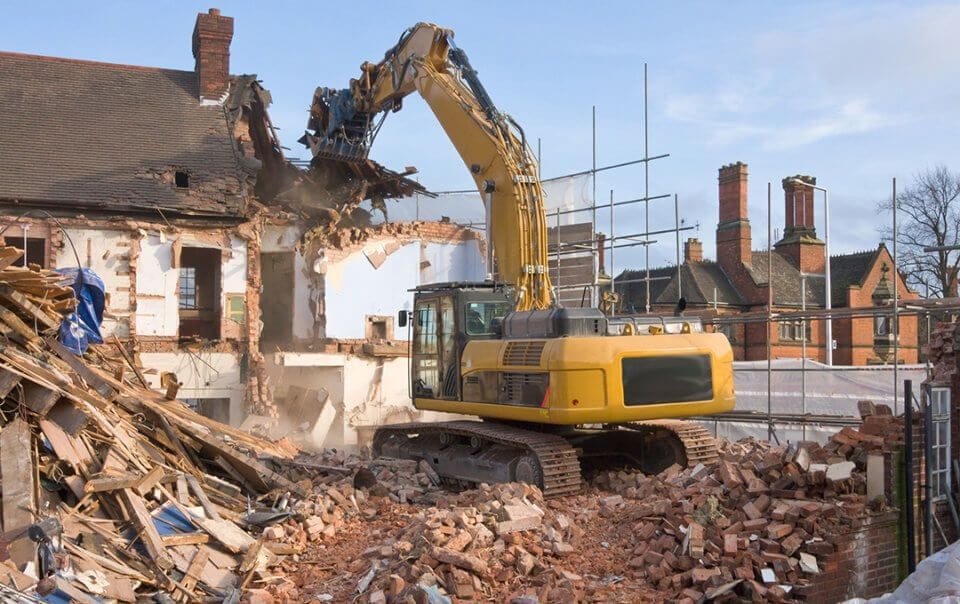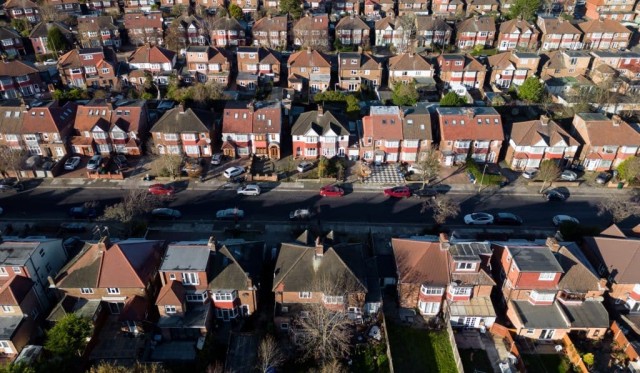Read next
The latest news, updates and expert views for ambitious, high-achieving and purpose-driven homeowners and property entrepreneurs.


Did you build without getting planning permission?
If you did, you need to act fast to avoid getting in trouble...
In a moment, we’re going to explain what retrospective planning permission is and when you should and shouldn’t make a retrospective planning application.
Before we dive into the details of retrospective planning permission, we want to speak directly to those of you who have already received a planning contravention notice or been contacted by a planning enforcement officer. We understand this can be an incredibly stressful and overwhelming experience.
That said, the reality is clear: if you’ve received an enforcement notice, your local council may require you to remove or demolish any unauthorised building works, whether carried out by you or a previous owner.
And if you don’t comply, the council can seek a court order and may proceed with direct action, including demolition at your expense.
Ignoring an enforcement notice can lead to prosecution. You may face court proceedings and be liable for legal penalties, including substantial fines.
To understand the consequences, just look at the case of Jim Bradwell, a 71-year-old homeowner who built a cottage on greenfield land in County Durham without planning permission.
Despite repeated refusals and enforcement notices spanning over a decade, he refused to demolish the property. As a result, he was jailed for six months and the council ultimately razed his home to the ground while he was behind bars.

You need retrospective planning permission when you’ve carried out unauthorised development without obtaining planning consent in advance. This typically applies in situations such as:
In many cases, people find themselves in this situation unintentionally. Maybe you assumed the work was permitted because your neighbour did something similar. Or perhaps you didn’t realise that different planning rules apply to listed buildings or properties in conservation areas.
Whatever the reason, it’s a common problem and one that can usually be addressed if you act quickly.
If your local council becomes aware of the unauthorised development, you may be served with a planning enforcement notice. This is where things get more serious.
To avoid forced demolition, restoration requirements, and potential fines, you generally have two routes.
You can either submit a retrospective planning application to regularise the development, or appeal against the enforcement notice within the specified timeframe, which is typically 28 days from the date it was issued.
The right option for you will depend on the nature of the breach, the planning context of your site, and whether your development could realistically be approved.
However, if permission is refused or your appeal fails, you may be legally required to remove the development or restore the site to its previous condition. And if you don’t comply, enforcement can escalate to prosecution, significant fines, or direct action taken at your expense.
Let’s start by exploring the first option: applying for retrospective planning permission, what it involves, and how to give your application the best possible chance of success.

Retrospective planning permission is the process of seeking approval for building works or changes of use that have already been completed without prior consent.
It is not unusual for an enforcement officer to invite you to submit a retrospective application as part of an investigation, giving you the opportunity to regularise the unauthorised material change of use or development.
You may secure planning permission retrospectively if your development is found to be acceptable under national and local policy. However, if permission is refused, it’s very likely that enforcement action will follow, and you could be required to remove or alter the unauthorised works.
If you’ve carried out development without planning permission, one of the main ways to resolve the breach is by submitting a retrospective planning application. This is a formal request to your local council to approve what’s already been built or changed.
While it’s not ideal to seek permission after the fact, retrospective applications are a recognised and lawful route. In fact, in some cases, councils encourage this step as a pragmatic way to resolve planning breaches.
Just like any other application, your proposal will be assessed against material planning considerations. You are not more or less likely to have your proposal approved simply because the work has already been carried out.
However, since the development is already there, planning officers are often in a better position to assess the actual impact, which can help clarify issues that might otherwise be speculative. This pragmatic perspective is widely acknowledged in professional town planning practice.
But be aware: if your application is refused, you could be asked to undo the works or face formal enforcement measures, including possible prosecution if you ignore the outcome.
That’s why your application must be prepared thoroughly, with supporting plans and statements that clearly justify the development. Ideally, it should be prepared by a chartered town planner who understands how to navigate the system and present your case in the strongest possible way. Their expertise can make all the difference between approval and enforcement.
Since the Levelling-up and Regeneration Act came into force in October 2023, the rules around enforcement and appeals have become much tougher.
If you were refused planning permission and then built anyway, you can no longer appeal an enforcement notice on the basis that permission should be granted (known as a "ground (a)" appeal). In other words, if you ignored the council's refusal and pressed on regardless, you may be left with no choice but to demolish or undo the works.
There is one exception: if more than two years have passed since your original planning refusal (or any appeal decision), you may still be able to appeal.
This change in law was designed to clamp down on intentional unauthorised development — and it’s now more important than ever to get expert advice before taking any steps forward.
Are you wondering how much it costs to apply for retrospective planning permission in the UK?
The short answer is that retrospective planning applications typically incur the same fees as standard planning applications. Here’s a breakdown of the current costs:
Note: Planning fees are subject to change and may be updated annually to align with inflation and government policies. It's advisable to check your local council’s website or the Planning Portal for the most up-to-date information on planning application fees.

Beyond the standard application fees, you’ll need to account for professional fees when preparing a retrospective planning application.
Fees charged by chartered RIBA practices typically start at £5,000 for extensions, £7,000 for small-scale conversions, and £10,000 for small-scale new builds.
These figures can vary depending on the expertise and experience of the firm, but it’s important to emphasise that opting for cheap architectural drawing services or working with unqualified individuals may cost you significantly more in the long run if your application is poorly prepared or ultimately rejected.
If enforcement action has already been initiated, you may also incur additional costs, such as solicitor fees, expert reports, and appeal costs if the case is taken to the Planning Inspectorate.
If you believe the enforcement notice is unjustified or that your development should be allowed, another option is to appeal the notice.
This is a formal process handled by the Planning Inspectorate, and gives you the opportunity to challenge the council’s decision or seek planning permission as part of the appeal.
But time is critical. You typically have 28 days from the date the enforcement notice was issued to submit your appeal. If you miss this deadline, you may lose your right to appeal altogether.
Appealing doesn’t cancel the notice, but it does temporarily pause enforcement action while your case is under review. Let’s break down how enforcement appeals work, the legal grounds you can rely on, and what to expect during the process.
When appealing, you must base your case on one or more specific legal grounds, as set out in Section 174 of the Town and Country Planning Act 1990.
These include:
The most commonly used is ground (a), asking the inspector to grant planning permission. However, following the Levelling-up and Regeneration Act 2023, if you were previously refused permission and went ahead regardless, you may no longer appeal under ground (a). This change was introduced to discourage intentional unauthorised development.
Once lodged, your appeal will be reviewed by the Planning Inspectorate. Enforcement action is paused during this period. The appeal will be handled via one of three methods: written representations, an informal hearing, or a public inquiry — depending on the complexity of the case.
The council will submit its own statement defending the enforcement notice, and you’ll have the chance to respond. After reviewing the evidence, the inspector will issue a decision.
If your appeal succeeds, the notice may be cancelled, amended, or planning permission granted. If your appeal is dismissed, the notice remains in force, and you must comply, often within a set number of weeks. Non-compliance may result in prosecution, financial penalties, or the council taking direct action at your expense.
Because enforcement appeals are highly technical and time-sensitive, your chances of success are significantly higher when the appeal is prepared and managed by experienced planning consultants who understand the legal framework, evidentiary requirements, and appeal strategy.
In some situations, particularly where no enforcement action has been taken, you may be able to make your unauthorised development lawful simply through the passage of time. This is done by applying for a certificate of lawfulness.
Until recently, different time limits applied depending on the type of breach. But with the introduction of the Levelling-up and Regeneration Act 2023, the rules have changed.
On the 25th of April 2024, the government replaced the four-year rule with a single, unified ten-year rule.
This means that to make an unauthorised development lawful through time alone, it must have existed continuously for at least ten years, without interruption or enforcement action, and must be supported by clear and consistent evidence.
Before this change, operational development such as extensions and outbuildings, and the conversion of a building into a single dwelling, could become lawful after just four years. That shorter timeframe no longer applies to any new breaches.
If your project was substantially completed before 25 April 2024, you may still be able to rely on the former four-year rule. However, the definition of "substantially completed" has not been clearly set out in law and will likely be shaped by future planning appeals and court decisions.
If you have not yet reached the ten year mark, or if your records are incomplete, or if neighbours have reported the breach, then applying for a certificate of lawfulness may not be an option. In those cases, a retrospective planning application is likely to be your only route forward.
There is also an important exception to the time rule. If the local authority believes you have deliberately concealed the development, the ten year clock does not start until the date the council discovers the breach.
One of the most well-known examples is the case of Robert Fidler, a farmer in Surrey who built a large mock-Tudor house in 2002 without planning permission. To avoid detection, he hid the house behind a tall wall of hay bales and tarpaulin.
He kept it hidden for over four years and then applied for a certificate of lawfulness, claiming that the time limit for enforcement had passed.
The case went to the Planning Inspectorate and the courts.
Ultimately, they ruled that deliberate concealment had prevented the four-year rule from applying. He was ordered to demolish the house, which he eventually did in 2016.
The ruling confirmed a clear legal principle: if you hide what you have built, the council retains the right to take enforcement action no matter how much time has passed.
If you believe your development might qualify under the ten-year rule, it is essential to seek advice from a chartered town planner. The strength of your evidence will make or break your case, and a successful certificate of lawfulness can give you long-term peace of mind.
Local planning authorities are committed to protecting the environment from unauthorised development and they will investigate alleged breaches of planning control.
So, if you’re lucky enough to be reading this before you start any work on your property, we have a very simple message for you: get your planning permission sorted out now.
Retrospective planning permission is possible, but you don’t ever want to be in a position where you are worrying about enforcement notices.
Whatever you are doing to your property, check whether you need planning permission. And if your project is covered by permitted development rights, do make sure you are fulfilling all the conditions.
If you have the slightest doubts about anything to do with changes to your property, consult an architect or a town planner.
A few years ago, Churchill Home Insurance analysed nearly 40,000 retrospective planning applications submitted over a three-year period. It was found that seven out of every eight applications were approved, giving a success rate of around 87.5 percent.
That might sound reassuring but ask yourself this: can you afford to be in the small percentage that gets refused?
If you're feeling uncertain about the process or overwhelmed by what’s involved, you're not alone. Navigating the planning system can be complex and stressful, especially when you’re already under pressure from enforcement action.
At Urbanist Architecture, we understand how difficult this can be and we’re here to help. Receiving a planning enforcement notice does not mean your project is beyond saving.
As a multidisciplinary team of chartered architects and town planners with a proven track record in securing retrospective planning permission and appealing enforcement notices, we can assist you in regularising unauthorised works or challenging your council’s decision with clarity, strategy, and care.

Nicole I. Guler BA(Hons), MSc, MRTPI is a chartered town planner and director who leads our planning team. She specialises in complex projects — from listed buildings to urban sites and Green Belt plots — and has a strong track record of success at planning appeals.
We look forward to learning how we can help you. Simply fill in the form below and someone on our team will respond to you at the earliest opportunity.
The latest news, updates and expert views for ambitious, high-achieving and purpose-driven homeowners and property entrepreneurs.
The latest news, updates and expert views for ambitious, high-achieving and purpose-driven homeowners and property entrepreneurs.










We specialise in crafting creative design and planning strategies to unlock the hidden potential of developments, secure planning permission and deliver imaginative projects on tricky sites
Write us a message